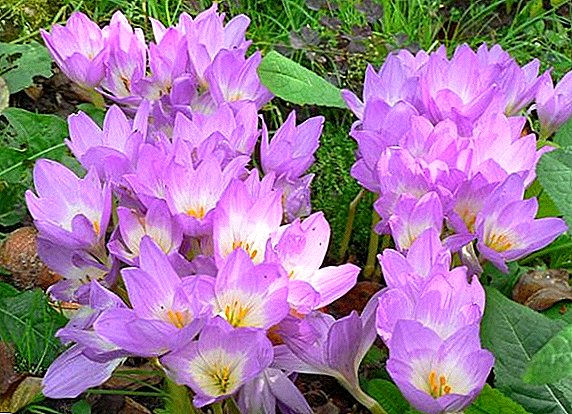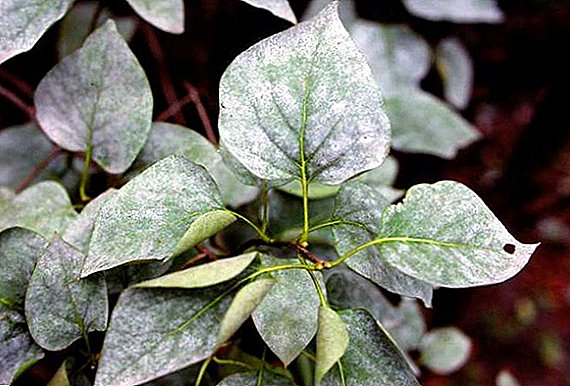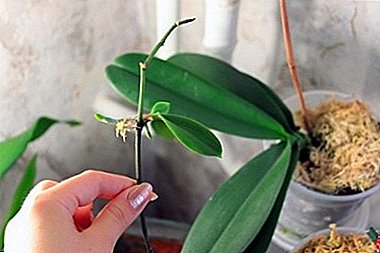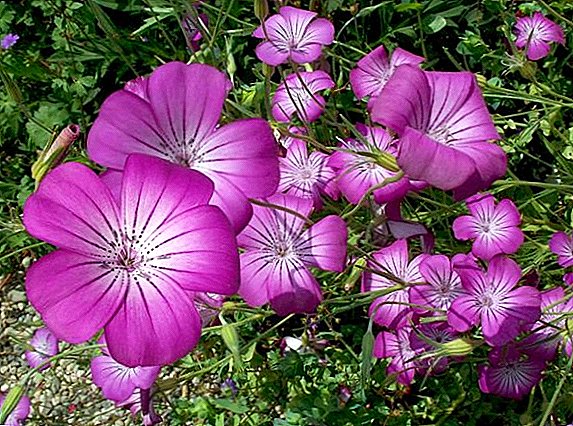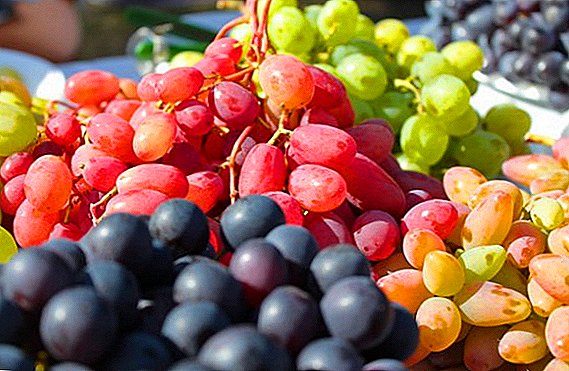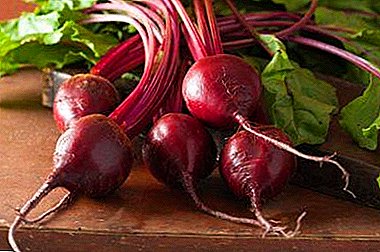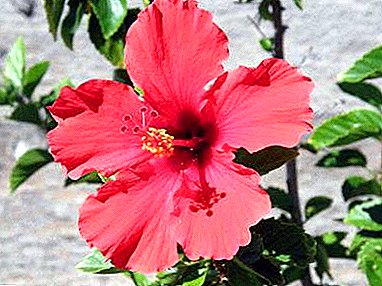
Chinese rose, also known as hibiscus, is a rather unpretentious plant. However, it can be defeated by various diseases and pests.
Knowing the causes of these diseases, one can prevent their occurrence. But if your plant is sick, you need to know how to deal with the disease.
This article is about hibiscus diseases and how to treat them. We will tell you how to properly care for this beautiful plant at home. For clarity, we will offer to view an informative video on the topic of the article and show in the photo what the pests of the Chinese rose look like.
Hibiscus Diseases
Leaf curl
The disease manifests itself deformation of the leaves. Why are the leaves curled? The reasons for this strain can be:
- pest infestation - aphids;
- burn injury or insufficient watering;
- infectious chlorosis;
- lack of trace elements.
If the leaves are curled due to the appearance of aphids on the plant, then you can easily determine this, having carefully examined the flower.
- After the detection of insects, it is necessary:
- Isolate the plant from others.
- The next step is to treat the plant with a soap solution or Fitoverm. Processing should be carried out 2-3 times with a certain interval.
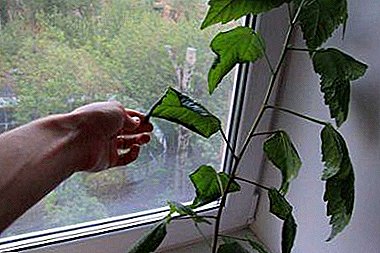 If your plant is sick due to a burn or insufficient watering, then you need to save it from direct sunlight and begin to conduct additional spraying of the flower.
If your plant is sick due to a burn or insufficient watering, then you need to save it from direct sunlight and begin to conduct additional spraying of the flower.- Chlorosis occurs due to the appearance of pests on the plant.
- First of all, it is necessary to get rid of them with special preparations.
- Then carry out watering using a solution of ferrous sulfate or iron chelate.
- For growth, hibiscus needs copper, iron, magnesium and potassium. With a lack of these trace elements the leaves also begin to curl. To avoid this, it is necessary to feed with universal fertilizers. They must be held every 3-4 weeks.
Bud fall
Why fall unblown buds? The reasons why hibiscus drops buds are different:
- lack of fertilizer;
- insect infestation;
- wrong place to grow.
For normal growth of the plant it is necessary to follow certain rules of care.
- It needs a sunny room with south placement.
- To carry out watering 1 time per day with separated water at room temperature. In winter, watering is reduced.
- The right ground.
- Compulsory fertilization containing:
- copper;
- magnesium;
- potassium;
- iron.
- At defeat by pests it is necessary to carry out special processing of a plant by insecticidal preparations.
We offer for viewing an informative video about the reasons for the fall of the buds on the Chinese rose:
The plant fades after transplant
 Transplanting is a stress for any plant, so in order for it to quickly recover and not start to hurt, you need to give the flower a special care.
Transplanting is a stress for any plant, so in order for it to quickly recover and not start to hurt, you need to give the flower a special care.
Needs pruning:
- Remove the tops of the shoots.
- Remove weak, broken and growing inside the crown shoots.
- After trimming the cut, it is necessary to process the charcoal.
- Temperature should also be monitored. After trimming it must be reduced by 2-3 degrees.
- The next stage is daily spraying with water at room temperature. Do not allow the soil to dry out.
Other diseases
- Root decay - occurs due to excessive watering. To prevent this, you need to strictly control the conditions of irrigation.
- Non-infectious chlorosis - arises due to the lack of trace elements. As a result, the branches become thinner, there are spots on the leaves, as well as their yellowing and falling off.
- Sunburn - manifested by spots on the leaves. Occurs when hit by direct sunlight. To prevent burns, the plant should not be put under direct rays.
- Vascular wilting - this is shrinking and wrinkling the branches of a flower and its death. The cause of this disease can be infection with fungi, fusarium, as well as infection with a virus. For the treatment of used special drugs.
Hibiscus pests: description and photo
Aphid
 Small insect that settles on the leaves, shoots and buds of the plant. It multiplies rapidly and thus covers the entire surface of the plant, creating a sticky coating on it and destroying young leaves. To get rid of aphids at an early stage, you can use a soap solution. They are washed with infected areas of the flower. At a later stage, the plant is treated with insecticides.
Small insect that settles on the leaves, shoots and buds of the plant. It multiplies rapidly and thus covers the entire surface of the plant, creating a sticky coating on it and destroying young leaves. To get rid of aphids at an early stage, you can use a soap solution. They are washed with infected areas of the flower. At a later stage, the plant is treated with insecticides.
Shchitovka
 After their appearance on the plant, brown tubercles are formed.
After their appearance on the plant, brown tubercles are formed.
To get rid of them the plant is sprayed with insecticides.
This should be done as soon as possible after the detection of the pest, otherwise the plant may die.
Redhead
 If the plant appeared waxy white discharge on the cuttings and the axils of the leaves, then he was struck by a worm.
If the plant appeared waxy white discharge on the cuttings and the axils of the leaves, then he was struck by a worm.
To get rid of it leaves are treated with mineral oils. This should be done in the shadows.
Galitsa
 Small midge, which leads to yellowing, drying of leaves and buds. Inside the buds are stored the eggs of this midge, of which there are worms. It is they who eat the buds, which eventually fall off.
Small midge, which leads to yellowing, drying of leaves and buds. Inside the buds are stored the eggs of this midge, of which there are worms. It is they who eat the buds, which eventually fall off.
To remove this pest, need to treat the soil by any means of soil pests
and collect the affected buds before they fall.
White fly
 Leaves leaves to yellow, covers them with sticky secretions.
Leaves leaves to yellow, covers them with sticky secretions.
Insects or their yellow larvae settle under the leaf.It is possible to see pests without a magnifying glass.
For treatment, treat the plant with an insecticide and apply potassium soap.
Brief about home care
- Landing - transplanted within 3 weeks after purchase, give 2 days of rest. It is produced very carefully, as the plant has a very sensitive root system.
- Priming should be light, fertile, consisting of sand, sod, leaf earth and humus.
- Lighting - provide the plant with diffused light. Keep in the sun without direct sunlight.
- Temperature - warm temperature without sharp drops.
- Watering - in summer, regular and abundant with warm settled water, in winter, watering is reduced.
- Top dressing. Liquid fertilizers with nitrogen content are selected. In winter they use potash and phosphate fertilizers.
- Pruning - produced immediately after transplantation, and then as they grow.
We offer you to read the informative video about the care of the Chinese rose:
All plants are subject to different diseases and the Chinese rose is no exception. Therefore, you should always remember and follow the rules of plant care to prevent the occurrence of diseases. And in the case when the flower is already suffering from pests or diseases, know the causes of their occurrence and methods of treatment.


 If your plant is sick due to a burn or insufficient watering, then you need to save it from direct sunlight and begin to conduct additional spraying of the flower.
If your plant is sick due to a burn or insufficient watering, then you need to save it from direct sunlight and begin to conduct additional spraying of the flower.
